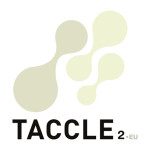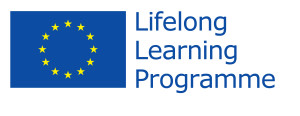9+yrs
Ease ***
Overview:
This project facilitates learning about the lives in other countries and is especially effective for comparing and contrasting schools in very different countries or localities.
To see an example :
http://www.grundschule-falkenstrasse.de/projekte/kinder/projektperu2.pdf
Description:
Firstly, ask learners what they would like to know about a child’s life in another country e.g. “How do you travel to school?”, “What’s the weather like?” Initially, write a long list of questions and edit them afterwards. To generate questions, another possibility is to take your children on a ‘flying visit’ on google maps to your partner school’s locality, using street view to make detailed observations and to formulate new questions.
Use your final list of questions to create a questionnaire and email it to the partner school. Don’t forget to ask them for photographs!
Whilst you are waiting for a reply (it can take a while), spend a few lessons getting the children to answer the very same questions about their school and locality. When they’ve done this, ask them to take photographs, draw pictures and collect evidence that could be used alongside their answers in a presentation.
When you’ve received a reply, add the information and photos to your existing presentation so that you have your information on one side, and the partner school’s information on the other.
Send the presentation to your partner school or share it online www.slideshare.com
If your policies allow, don’t forget to connect and share information with your partner school via Skype, Twitter and Facebook. The latter two are much more practical for keeping in touch regularly and catching up with what your friends abroad are up to!
Also, we love www.photosynth.net Use it to send 360˚ panoramic shots of your classroom and locality to your friends in other school. See an example: http://photosynth.net/view.aspx?cid=dba9c819-0c38-44a1-b782-554243b01072
What do I need?
- a partner in another country (the further away, the better!)
- Internet access
- www.maps.google.com/
- www.slideshare.com
Added value:
Whilst learning about other countries, cultures and the lives of ordinary people around the globe, nothing beats this kind of e-learning activity. Not only is the learning accurate, current and (often) instantaneous, but it is the kind of activity that develops and improves over time, allowing learners to develop skills over a longer period of time and to a purposeful end.
Hints and tips:
There are many ways to strike up links with school all around the world, the most obvious of these is Comenius:
www.ec.europa.eu/education/lifelong-learning-programme/comenius_en.htm
But there are other agencies that provide this service, such as www.dfid.gov.uk/Get-Involved/In-your-school/global-school-partnerships/Contacts (UK).
Alternatively, you may make contact with a like-minded teacher on a teachers’ forum that you could link with.
Don’t be shy and try to get in touch with other teachers in other countries. Most of us have similar goals and interests.
Safety:
Ensure all correspondence happens through you, the teacher. Emphasise to learners the importance of not sharing personal email addresses etc on the web.
Other opportunities to use the same software:
- EU snapshots of life – ask learners to draw a picture of “their Europe” ( e.g. how the EU plays a role in their everyday life, what it means to be European). Then with the help of the teacher the photos are scanned and uploaded online. Create an online gallery where friends and parents are asked to rate the pictures – there will be 3 prizes: Highest Rated Photo, Most Artistic/Creative Photo, Funniest Photo
This post is also available in: Dutch, Italian, Spanish, Portuguese (Portugal), Romanian, Welsh




 English
English Nederlands
Nederlands Deutsch
Deutsch Italiano
Italiano Español
Español Português
Português Română
Română Cymraeg
Cymraeg
Como primeira impressão, a atividade acaba por ter um enfoque bastante importante na aprendizagem dos alunos, numa aula de língua estrangeira.
As vantagens que acabamos por retirar desta atividade são a partilha de culturas de uma forma mais interativa (bastante benéfico para a aprendizagens dos alunos), conhecimento e prática de uma nova língua, consciencialização da diversidade cultural que o Mundo abrange, dando-lhes a conhecer novas fomas de vida.
No entanto, quanto às desvantagens, a atividade acaba por representar uma maior complexidade, em termos de planeamento e execução. Como por exemplo, a utilização do Skype significa uma maior coordenação dos horários das aulas dos dois parceiros (países). Além do mais, o professor tem de ter uma boa planificação da própria aula, gerindo os recursos a serem utilizados (computador com ligação à Internet, microfone e outras ferramentas essenciais para a concretização das várias sugestões apresentadas).
Quanto a outras sugestões que podem ser apresentadas, poderiam fazer um mini-vídeo onde apresentassem a escola, cidade e até mesmo o próprio país para que os outros possam ter uma maior visão; os professores podem, também, facilitar aos alunos, que estejam interessados, a corresponderem-se com outro aluno de outro país através do penpal, email (para que exista um maior conhecimento do outro virtualmente, criando-se ligações pessoais).